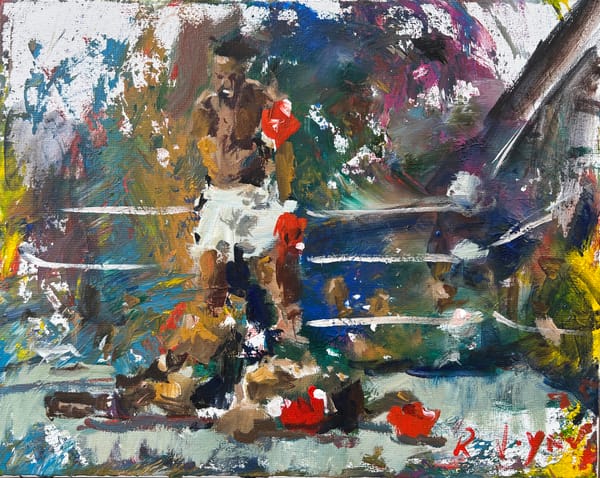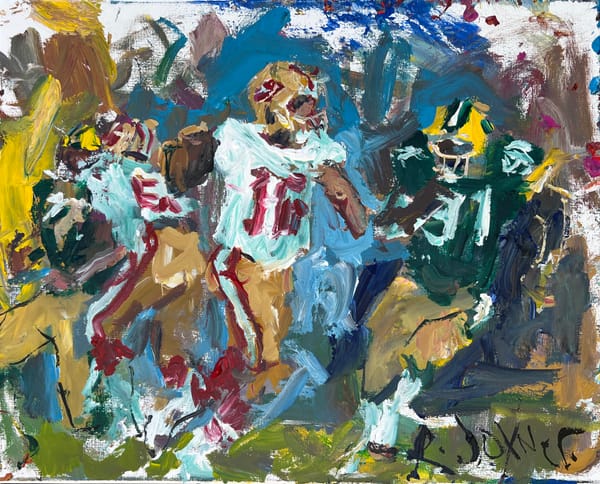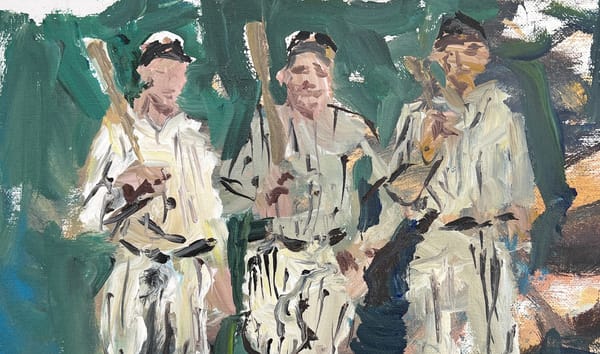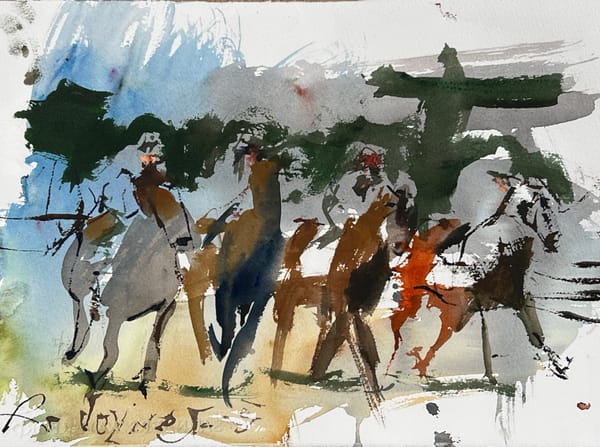How Do You Paint an Abstract Landscape Step by Step?
Whether you’re a seasoned artist or just starting out, this step-by-step guide will help you create your own unique abstract landscape painting.
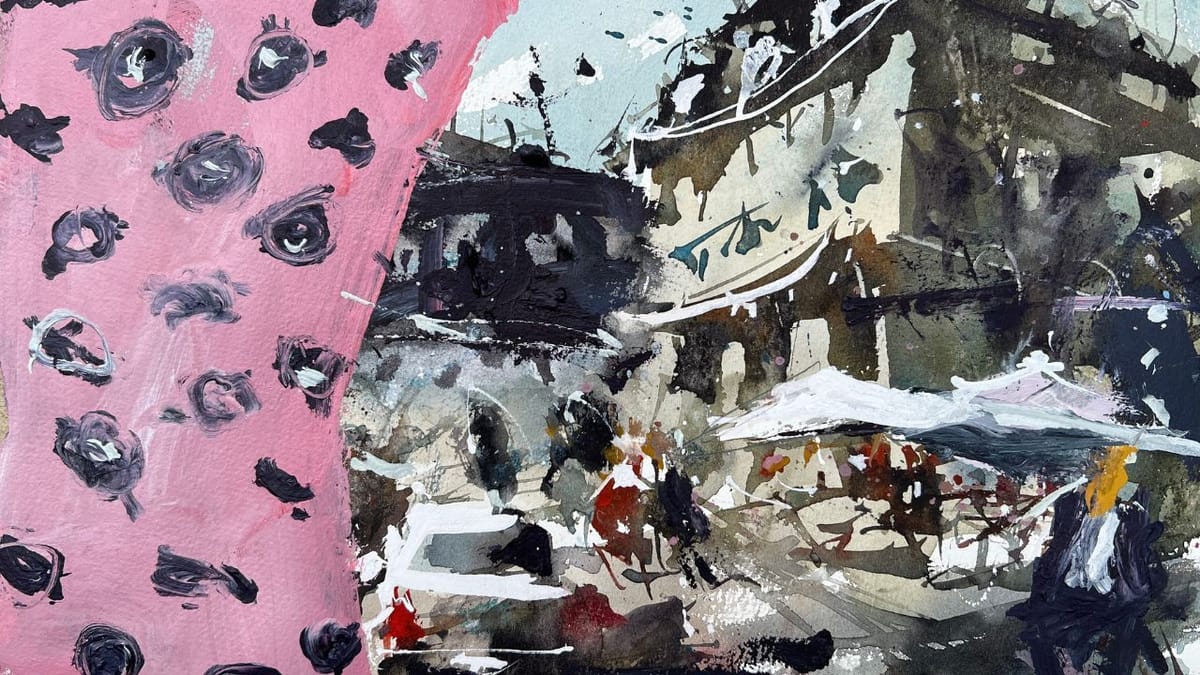
Abstract landscapes are a beautiful and expressive way to capture the essence of a scene without relying on realistic details. Painting an abstract landscape can be a liberating experience, allowing you to explore color, texture, and form in new ways. Whether you’re a seasoned artist or just starting out, this step-by-step guide will help you create your own unique abstract landscape painting.
Abstract landcape painting video
Let’s get started with painting an abstract landscape painting; Step-by-step guide
Even-though the video covers the big idea, I thought I would breakdown some ideas I used along the way in case you still had questions.
Step 1; Gather your materials
Before you begin painting, it’s essential to gather all the necessary materials. For an abstract landscape, you’ll need:
- A canvas or other surface to paint on, I used an inferior watercolor painting
- Inks
- Acrylic or watercolor paints in various colors
- Brushes of different sizes and shapes
- A palette for mixing colors
- A cup of water (for acrylic paints)
- Paper towels or rags for cleaning brushes
- A reference image or sketch of the landscape you want to paint (optional)
Step 2; Prepare your workspace
Set up your workspace in a well-lit area with plenty of room to move around. Make sure your surface is securely propped up on an easel or another stable surface. Arrange your paints, brushes, palette, and other materials within easy reach.
Step 3; Start with a reject, or inferior painting
Before diving into the painting process, it’s helpful to create a loose sketch of your intended composition. This can be done directly on the canvas using a light pencil or thin wash of paint that won’t show through later layers.
Begin by identifying the main elements in your reference image or sketch – such as hills, trees, water features – and loosely outline their shapes on the canvas. Remember that this is an abstract landscape; don’t worry about capturing every detail perfectly. Instead, focus on capturing the overall structure and flow of the scene.
For me, that was already done. The previous watercolor painting was pretty solid in that department. I was only adding abstract patterns to that so I needed to give some thought as to where to place them. I ultimately decided to use the left-hand side and leave the buildings on the right alone. I did add a few marks here and there to blend colors but that’s about it
Step 4; Establish an area to add abstract pattern
One key aspect of successful abstract landscape painting is creating a sense of color harmony. This means choosing a color palette that works well together and evokes the mood you want to convey.
Since I’m going with an unconventional approach I decided to blast it with pink and black. I thought this would really pop and stand out from the hues in the urban scene.
Start by selecting a few dominant colors for your painting – these could be inspired by your reference image or chosen based on personal preference. Mix these colors on your palette, creating various shades and tints by adding white or black as needed.
Next, begin applying these colors to your canvas, focusing on the large shapes you outlined in your sketch. Use broad brushstrokes and allow the colors to blend together naturally. Remember that this is just the first layer of paint; you’ll be adding more detail and texture later on.
Step 5; Develop the painting and pattern a little more if needed
Once you’ve established the basic color scheme of your abstract landscape, it’s time to add texture and depth. This can be achieved through various techniques, such as:
- Layering: Apply multiple layers of paint, allowing each layer to dry before adding the next. This creates a sense of depth and dimension in your painting.
- Impasto: Use thick applications of paint with a palette knife or stiff brush to create raised areas that catch the light.
- Glazing: Apply thin, transparent layers of paint over dried areas to create subtle shifts in color and tone.
- Scumbling: Drag a dry brush with minimal paint across the surface of your painting to create rough, textured effects.
Step 6; Refine and finish
As you continue working on your abstract landscape, take a step back periodically to assess the overall composition. Make any necessary adjustments – such as balancing colors or refining shapes – until you’re satisfied with the result.
Once you’re happy with your painting, allow it to dry completely before varnishing or framing it (if desired).

Conclusion
Painting an abstract landscape can be an enjoyable and rewarding process that allows you to explore new artistic techniques while capturing the essence of a scene. By following these step-by-step instructions, you’ll be well on your way to creating a stunning abstract landscape that reflects your unique vision and style.
